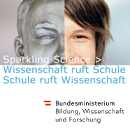PLASTIC.ALPS
Distribution and impact of microplastics in sensitive high alpine environments
In the past few years, the awareness about microplastics (MP) in the environment has evolved extremely fast. The topic is omnipresent when media report about enormous amounts of plastics in the sea. However, microplastic pollution did not make a halt in front of seemingly inaccessible areas such as high alpine areas. Sources thereof are manifold and can locally be attributed to skiing tourism, construction activities in high altitudes and the connected gastronomy. Additionally, there are also long-range sources from where particles by airborne transport are manifested in ice and snow. In glacial skiing areas those emissions add on by the local usage of geotextiles in order to reduce albedo. Large areas covered by geotextiles are emission sources for polypropylene fibers which remain in high altitudes and can have an impact on the cryobiota. MP particles are also connected with additives which alter soils, waters and the communities living therein. This fact requires a shift in the overall awareness towards this issue which should result in a sustainable change of behaviour in our plastic consumption. It is the goal in this project to produce a broader understanding of the extent and quality of plastics pollution, especially in high altitude areas. We plan excursions to Tyrolean glaciers together with the schools to investigate the current plastics contamination. Additional data will be gathered with a Citizen Science contribution via a littering app (Dreckspotz). With the next generation we will investigate via workshops at the University of Innsbruck the impact of MP on living organisms such as microorganisms and aquatic invertebrates. Our goal is to achieve new measures together with stakeholders (such as the cable car lobby, Austrian Alpine Club, Naturfreunde) and politicians in the sense of sustainable handling of sensitive ecosystems such as high alpine regions. The next generation should be in the position to move the general awareness to their benefit of their future.
(Photocredit © Klemens Weisleitner)


